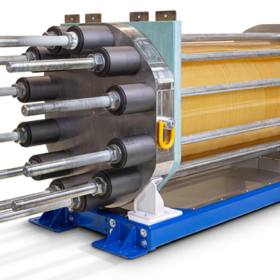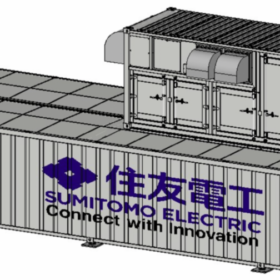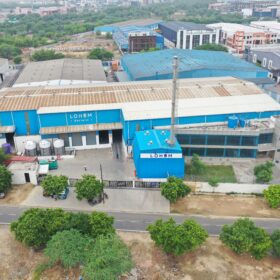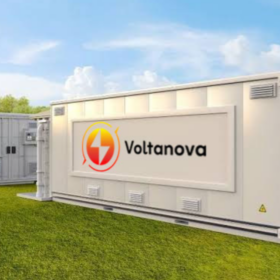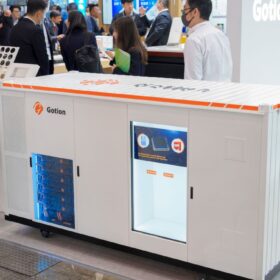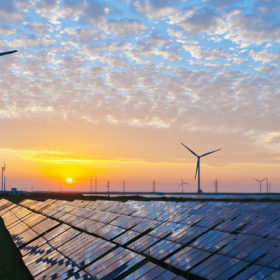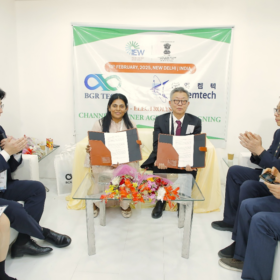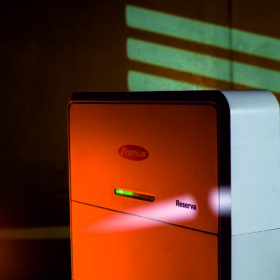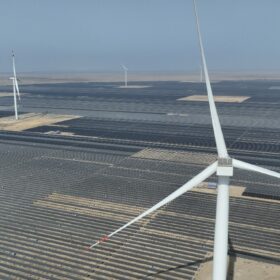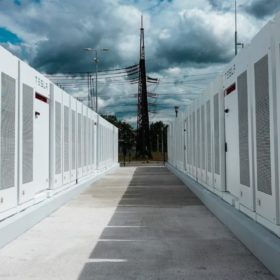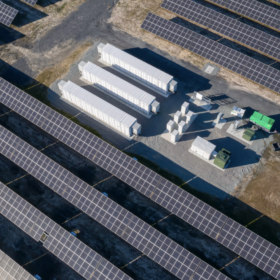The Hydrogen Stream: BGR Tech partners alkaline electrolyzer manufacturer Stargate for green hydrogen projects in India
BGR Tech will integrate Stargate’s alkaline electrolyser stacks with its in-house developed balance-of-plant to execute green hydrogen production projects in India.
Vikram Solar to enter solid-state battery manufacturing
Indian PV manufacturer Vikram Solar will launch a 1 GWh fully integrated solidstate cell and battery facility, expandable up to 5 GWh.
Sumitomo Electric launches vanadium redox flow battery with 30-year lifespa
Sumitomo Electric’s new system comes in three versions, providing up to 10 hours of storage. It achieves improvements in output and energy density, through component enhancements, thereby reducing cost and physical footprint.
Lohum announces India’s first battery-grade lithium refinery
Lohum stated its new lithium refinery will have the capacity to produce 1,000 metric tonnes annually.
RMP Group selects Voltanova’s thermal energy storage solution to decarbonize textile operations
Textile major RMP Group will deploy Voltanova’s thermal energy storage system for its industrial operations.
Gotion launches 7 MWh BESS container, 650 Ah cell
The Chinese manufacturer has joined the energy density race with the release of its latest utility-scale battery energy storage system and high-capacity cells.
The Hydrogen Stream: India begins trials of hydrogen trucks for long-haul transportation
The trial marks a significant step forward in assessing the real-world commercial viability of using hydrogen powered vehicles for long-distance haulage as well as setting up the requisite enabling infrastructure for their seamless operation.
Solar, batteries and wind to make up 93% of 2025 U.S. electricity capacity deployments
The Energy Information Administration projects that 32.5 GW of solar power, 18.2 GW of energy storage, and 7.7 GW of wind generation will be deployed this year, accounting for nearly 93% of total new capacity, which is expected to reach a record 63 GW.
The Hydrogen Stream: BGR Tech partners Korea’s Elchemtech for PEM water electrolyser technology in India
BGR Tech Ltd has signed a Memorandum of Understanding to introduce Elchemtech’s advanced proton exchange membrane water electrolyser in India. BGR Tech will integrate these electrolysers in its balance-of-plant (BoP) for green hydrogen projects in India.
Fronius introduces 15.8 kWh lithium iron phosphate battery for rooftop PV
The Austrian manufacturer has launched its first battery system using LFP cells. A total of up to four units can be connected in parallel for a capacity of 63 kWh.
